31 Best Mailchimp A/B Testing Techniques to Use in 2023
Boost Your Email Marketing Strategy with Mailchimp A/B Testing: The Ultimate How-To
Are you tired of sending out emails without knowing if they’re effective? Wondering how you can level up your email marketing game? Look no further! Mailchimp A/B testing is here to revolutionize how you connect with your audience.
With this powerful feature, you can unlock the potential of data-driven decision-making and take your campaigns to new heights.
But what exactly is A/B testing in Mailchimp? It’s a simple yet ingenious method that allows you to compare two different versions of an email and see which one performs better.
31 Best Mailchimp A/B Testing Techniques to Use in 2023
- Segmented Audience Testing: Divide your audience based on behavior, location, or age, and test different content for each segment.
- Subject Line Variations: Test various subject line lengths, tones, and structures to see which gets the highest open rate.
- Send Time Optimization: Test different sending times and days to discover when your audience is most active.
- Personalization Elements: Experiment with personalizing email content, such as using the recipient’s name or mentioning past purchases.
- Visual Content: Compare emails with images, GIFs, and videos to those without.
- CTA Button Testing: Experiment with different call-to-action (CTA) buttons in color, size, text, and placement.
- Email Length: Test short, concise emails against longer, more detailed ones.
- Responsive Design Testing: Ensure your emails are optimized for mobile, desktop, and tablet.
- Plain Text vs. HTML: Compare the performance of plain-text emails to HTML-rich emails.
- Preview Text: Experiment with teaser texts that appear next to or beneath the subject line in an inbox.
- Landing Page Links: Test various landing pages to see which has the highest conversion from your emails.
- Interactive Elements: Include quizzes, surveys, or interactive images and measure engagement.
- Font & Typography: Test different font types, sizes, and colors to check for readability and appeal.
- In-email Social Proof: Add testimonials, reviews, or user-generated content within the email.
- Product Recommendations: Personalize product recommendations based on user activity.
- Frequency Testing: Send emails at different intervals (e.g., daily, weekly, bi-weekly) and monitor for engagement and unsubscribes.
- Storytelling vs. Direct Offer: Compare narrative-driven content with direct promotional offers.
- Footer Content: Test different footer content, such as disclaimers, social links, or secondary CTAs.
- Incentives and Discounts: Experiment with offering discounts, free shipping, or gifts.
- Re-engagement Campaigns: Design A/B campaigns specifically for subscribers who haven’t engaged in a while.
- Emojis in Subject Lines: Compare subject lines with and without emojis.
- Social Media Integration: Test the inclusion of social sharing buttons or content from platforms like Instagram or Twitter.
- Urgency and Scarcity: Experiment with limited-time offers or countdown timers.
- Testimonials and Reviews: Include customer testimonials and reviews and see if they drive higher engagement.
- Listicle vs. Narrative: Test emails structured as listicles against story-based ones.
- Interactive vs. Static Images: Use interactive images like hover-to-reveal against regular static images.
- Dynamic Content changes based on the viewer’s demographics or behavior.
- Feedback Solicitation: Test emails asking for feedback or reviews and measure the response.
- Video Thumbnails: Experiment with embedded video thumbnails that lead to your website.
- User-generated Content: Showcase user content, such as photos of them using your product.
- A/B Testing Frequency: Instead of just setting up a one-time A/B test, consistently test and iterate to continuously learn about your audience.
By understanding the basics and diving into the world of A/B testing, you’ll gain insights into what resonates with your subscribers and optimize your strategies accordingly.
Mailchimp’s user-friendly interface makes it easy for anyone to get started with A/B testing. No technical expertise is required! So why wait? Let’s dive in and harness the power of Mailchimp A/B testing today!
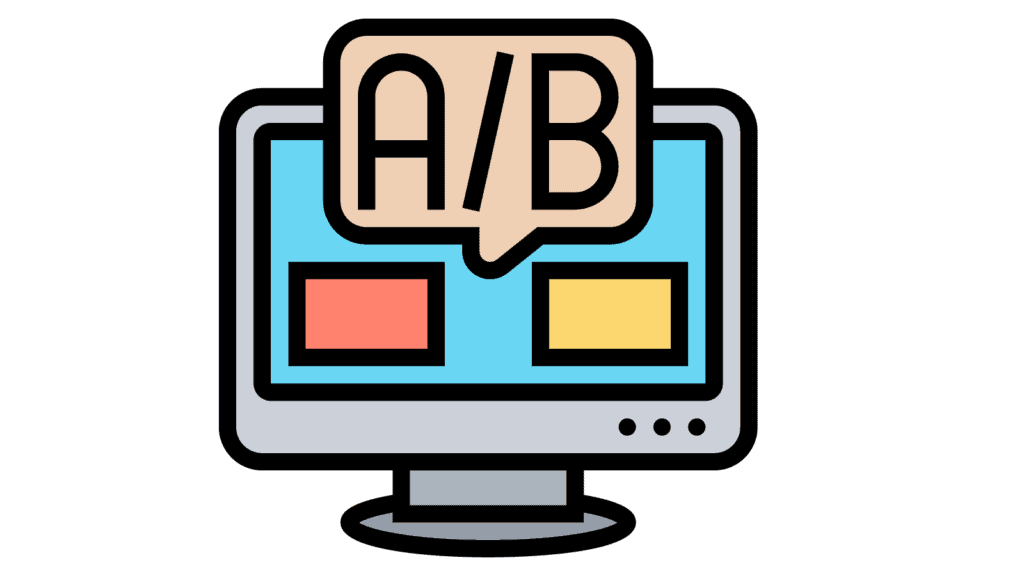
Benefits of A/B Testing in Mailchimp
Increase email open rates and click-through rates through practical testing. By conducting A/B tests in Mailchimp, you can identify the most compelling subject lines, email designs, and call-to-action buttons. This allows you to optimize your campaigns for maximum engagement.
Optimize your campaigns based on real-time insights and user preferences. With A/B testing in Mailchimp, you can gather valuable data on how different elements of your emails perform with your audience. Analyzing these insights lets you make informed decisions to improve your email marketing strategy.
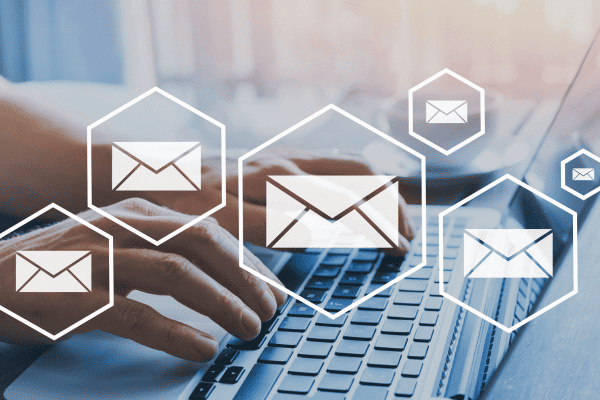
Improve engagement and conversion rates by delivering more relevant content. A/B testing enables you to experiment with different content variations, such as personalized greetings or tailored product recommendations.
By providing more targeted and relevant content to your subscribers, you can enhance their overall experience and increase their likelihood of taking action.
Maximize the ROI of your email marketing efforts with targeted experiments. Through A/B testing in Mailchimp, you can test different strategies and tactics to determine what works best for your audience. This allows you to allocate resources effectively and focus on tactics that generate the highest return on investment.
How to Set Up A/B Testing Campaigns in Mailchimp
Setting up A/B testing campaigns in Mailchimp is a breeze. Follow this step-by-step guide to create practical A/B tests and optimize your email marketing strategy.
Choose variables to test
It’s crucial to select the correct variables for experimentation. Mailchimp offers several options to test, including:
- Subject lines: Compare different subject lines to see which resonates better with your audience.
- Call-to-action buttons: Test CTA button variations and determine which drives more clicks.
- Audience segments: Experiment with different audience segments to determine which group responds best to your emails.
Define goals and metrics.
Before you dive into Mailchimp A/B Testing, define clear goals and metrics for measuring success. Consider what you want to achieve with your campaign and the key performance indicators (KPIs) to help you track progress.
Some standard metrics include open rates, click-through rates, conversion rates, and revenue generated.
Easily set up control groups.
Mailchimp A/B Testing makes it easy to set up control groups for accurate comparison. By creating a control group, you can establish a baseline against which you’ll measure the results of your A/B test. This ensures that any observed differences are genuinely due to the tested variations.
Determine sample sizes
To obtain reliable results from your Mailchimp A/B Testing, it’s essential to determine appropriate sample sizes. Mailchimp guided sample size calculations based on statistical significance levels and desired confidence intervals.
By choosing suitable sample sizes, you can ensure that your findings are statistically valid.
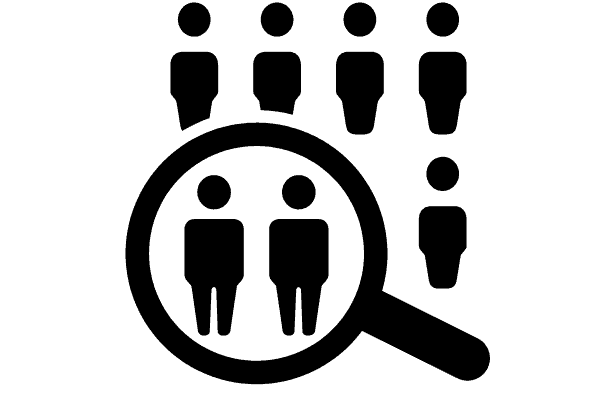
Best Practices for A/B Testing in Mailchimp
To get the most out of your A/B testing in Mailchimp, it’s essential to follow some best practices. By implementing these strategies, you can optimize your email campaigns and achieve better results.
Test one variable at a time to isolate its impact on performance.
When conducting Mailchimp A/B Testing, focusing on testing one variable at a time is crucial. This allows you to accurately measure the impact of each change on your campaign’s performance.
Whether it’s the subject line, call-to-action button, or email design, isolating variables helps you understand what drives engagement and conversion rates.
Ensure your sample size is statistically significant for reliable results
For meaningful Mailchimp A/B testing results, make sure your sample size is statistically significant. A large enough audience ensures that the data collected accurately represents your target market.
This way, you can rely on the insights gained from the test to guide your decision-making process confidently.
Use clear and concise subject lines that grab the attention
Crafting compelling subject lines is essential for increasing open rates. Keep them clear and concise while also grabbing attention. Avoid using vague or misleading language that might confuse recipients or lead them to disregard your emails. Instead, aim for subject lines that pique curiosity or offer value upfront.
Continuously iterate and refine your campaigns based on test outcomes
Mailchimp A/B testing should be an ongoing process rather than a one-time event. Once you have gathered insights from your tests, use them to refine and improve future campaigns.
Implement changes based on what worked best during testing and monitor how these adjustments impact metrics such as click-through rates and conversions.
Following these best practices for Mailchimp A/B testing you can fine-tune your email marketing efforts and maximize their effectiveness. Remember to focus on one variable at a time, ensure statistical significance in sample size, use attention-grabbing subject lines, and continuously iterate based on test outcomes.
Understanding Statistical Significance in A/B Testing
Statistical significance is crucial in determining the reliability of A/B test results. You can confidently interpret data and make informed decisions by understanding statistical significance. Let’s explore the critical factors involved in this process.
What are p-values and confidence intervals?
P-values and confidence intervals play a vital role in analyzing A/B test results. The p-value measures the probability of obtaining the observed data if there were no fundamental differences between the tested variants.
On the other hand, confidence intervals provide a range within which we can be reasonably confident that the actual effect lies.
Avoid concluding insignificant or inconclusive tests.
It’s important to avoid jumping to conclusions based on little or inconclusive test results. When a test lacks statistical significance, any observed differences between variants could have occurred by chance alone.
In such cases, it’s best to conduct further testing or gather more data before making decisions.
Utilize Mailchimp’s statistical tools for accurate analysis.
Mailchimp provides various statistical tools to help you accurately analyze your A/B test results. These tools can assist you in calculating p-values, confidence intervals, and other essential metrics for determining statistical significance.
By leveraging these features, you can gain deeper insights into your campaigns and optimize your marketing strategies accordingly.
Analyzing and Interpreting A/B Test Results in Mailchimp
Key Metrics for Interpretation
- Open rate, click-through rate, and conversion rate are crucial metrics to analyze when interpreting A/B test results in Mailchimp.
- These metrics provide insights into the effectiveness of different email variants.
Identifying Winning Variants
- To determine winning variants, looking for statistically significant differences between the test groups is essential.
- Analyzing the data allows you to identify which variant performs better based on reliable statistical significance.
Utilizing Visualizations and Reports
- Mailchimp offers a range of visualizations and reports that aid in effectively analyzing Mailchimp A/B testing data.
- These tools help visualize performance trends, compare metrics across variants, and gain actionable insights.
Making Data-driven Decisions
- With the analysis complete, it’s Time to make data-driven decisions to optimize future campaigns.
- Use the information gathered from A/B testing to refine your email content, subject lines, design elements, or targeting strategies.
Optimizing Email Subject Lines with A/B Testing
Optimizing your subject lines is crucial to maximizing the impact of your email campaigns. A/B testing can help you fine-tune your approach and boost open rates. Here’s how you can optimize email subject lines using Mailchimp’s A/B testing feature:
- Test different subject lines: Experiment with various subject line variations to see which resonates best with your audience. Craft multiple options that convey the essence of your message while piquing curiosity or offering value.
- Craft compelling and personalized subject lines: Tailor your subject lines to connect with individual subscribers personally. Consider incorporating their names or referencing their preferences to attract attention and foster engagement.
- Analyze performance metrics: Once you’ve sent out your A/B test emails, closely monitor the performance metrics provided by Mailchimp. Pay attention to each variant’s open rates, click-through rates, and conversions.
- Identify the most effective subject line variants: Based on the data collected, determine which subject lines performed best in terms of engagement and conversion metrics. Look for patterns or keywords that consistently yield positive results.
- Implement winning subject lines in future campaigns: Take the insights gained from A/B testing and apply them to future email campaigns. Incorporate successful subject line strategies into your regular communication to enhance subscriber engagement.
By leveraging Mailchimp’s A/B testing capabilities, you can refine your email subject lines for optimal impact. Remember, it’s essential to continuously experiment and adapt based on data-driven insights to keep improving your email marketing efforts.
Designing Effective Call-to-Actions with A/B Testing
Experimenting with different call-to-action designs, colors, and placements is crucial for optimizing click-through rates. By testing variations of your CTAs, you can gather valuable insights to create high-converting buttons.
To design effective call-to-actions, consider the following tips:
- Variety in Design: Try different designs to see which resonates best with your audience. Experiment with various shapes, sizes, and styles to find the most visually appealing CTA.
- Color Psychology: Colors play a significant role in influencing user behavior. Test different color schemes for your call-to-action buttons to evoke specific emotions or draw attention. For example:
- Use bold and contrasting colors like red or orange to create a sense of urgency.
- Blue and green tones can convey trustworthiness and reliability.
- Yellow can grab attention and create a feeling of excitement.
- Placement Matters: Where you position your call-to-action on a webpage can significantly impact its effectiveness. Test locations, such as above the fold, within content sections, or at the end of an article, to determine what placement generates the highest click-through rates.
- Compelling Language: The language used in your call-to-action button should be clear, persuasive, and action-oriented. Consider these examples:
- “Get Started Now”
- “Claim Your Free Trial”
- “Join Our Exclusive Community”
Leveraging A/B testing insights allows you to refine your CTAs further:
- Analyze data from Mailchimp A/B testing to identify which variations perform better.
- Iterate on successful elements by combining them into new versions for further testing.
- Continuously monitor performance metrics like conversion rates and engagement levels.
By consistently refining and optimizing your call-to-action buttons through A/B testing, you can enhance user experience and increase conversions on your website or landing pages.
Remember, the key is experimenting, learning from your test results, and iterating on your designs to create compelling CTAs that drive action.
Segmenting Audiences for Mailchimp A/B testing
Dividing your audience into distinct segments is crucial. By doing so, you can conduct targeted experiments and gain valuable insights into what works best for different groups of subscribers.
Test different content or offers based on demographics, preferences, or behavior. This allows you to tailor your messages to each segment, increasing the chances of engagement and conversion. For example:
- Create separate campaigns for different age groups and test variations of your message to see which resonates more effectively.
- Segment your audience based on their purchase history and experiment with different product recommendations or discounts.
Customizing messages to specific segments not only helps you deliver more relevant content but also enables you to measure the impact of segmentation on campaign performance through A/B testing. Consider these steps:
- Divide your audience into two or more segments.
- Design different versions of your email campaign tailored to each piece.
- Randomly assign subscribers within each article to receive either Version A or B.
- Analyze the results by comparing open rates, click-through rates, conversions, or other relevant metrics.
Following this process, you can identify which version performs better within each segment and make data-driven decisions about future campaigns.
It’s important to note that while A/B testing can provide valuable insights, it’s essential to have a large enough sample size within each segment for statistically significant results.
Testing Email Content and Layouts with A/B Testing
Experimenting with different email layouts, images, and content formats is crucial to optimizing your email marketing strategy. Through Mailchimp A/B testing, you can determine which elements resonate best with your subscribers and improve the overall effectiveness of your campaigns.
- Test variations of headlines, body copy, or visual elements within emails: A/B testing allows you to compare different versions of your email content to see what performs better. You can create variations by tweaking headlines, body copy, or visual elements such as images or graphics.
- Experiment with different email layouts: Try various layout designs to see which ones capture your audience’s attention more effectively. You could test a single-column configuration against a multi-column format or explore different placements for call-to-action buttons.
- Determine which content resonates best with your subscribers through A/B tests: By creating two versions of an email campaign and sending each version to a subset of your subscriber list, you can analyze the performance metrics (such as open rates, click-through rates) to identify which content resonates better with your audience.
- Optimize email design for improved readability and user experience: Use A/B testing to refine the design aspects that impact readability and user experience. Test different font styles, sizes, colors, and formatting options to ensure your emails are easily read on various devices and screens.
A successful Mailchimp A/B testing strategy requires ongoing experimentation and analysis. By continuously refining your email content and layouts based on the insights gained from these tests, you can optimize engagement levels and drive better results in your email marketing efforts.
Leveraging Personalization through A/B Testing
Testing personalized email greetings or recommendations based on user data can significantly enhance your email marketing strategy. By tailoring your messages to each individual’s preferences, you can create a more engaging and personalized experience for your subscribers.
Exploring dynamic content options opens up new possibilities for personalization. Consider incorporating product recommendations or location-based offers into your emails. This allows you to provide targeted content that aligns with the recipient’s interests or geographical location.
Measuring the impact of personalization on engagement and conversion rates is crucial in understanding its effectiveness. Through Mailchimp A/B testing, you can compare the performance of personalized emails against non-personalized ones.
Analyzing these results provides valuable insights into which approaches resonate better with your audience.
Utilize the insights from Mailchimp A/B testing to deliver more relevant and tailored emails. Identify patterns and trends in customer behavior to refine your email campaigns further. By leveraging personalization techniques, you can increase open and click-through rates and drive conversions.
Key Takeaways from Mailchimp A/B Testing
In conclusion, Mailchimp’s A/B testing feature offers numerous benefits for optimizing email marketing campaigns. By conducting experiments and analyzing the results, you can make data-driven decisions to improve your email subject lines, call-to-actions, content layouts, and personalization strategies.
Setting up Mailchimp A/B testing campaigns in Mailchimp is a straightforward process that allows you to compare different variations of your emails. Follow best practices such as segmenting audiences and understanding statistical significance to ensure accurate results.
Once the tests are complete, effectively analyzing and interpreting the findings is crucial.
To optimize your email subject lines with Mailchimp A/B testing, experiment with different wording and styles to find what resonates best with your audience. Similarly, designing effective call-to-actions involves testing various formats and placements to drive higher engagement.
Segmenting audiences allows you to target specific groups with tailored messages for more impactful results. Testing email content and layouts helps identify what type of content appeals most to your subscribers.
Leveraging personalization through Mailchimp A/B testing enables you to create customized experiences that increase customer engagement and conversions. You can enhance your email marketing strategy by effectively utilizing Mailchimp’s features.
Incorporate these critical takeaways into your Mailchimp A/B testing approach today for improved campaign performance! Experimentation is essential in finding what works best for your unique audience.
Final Thoughts – Mailchimp A/B testing
As a small business owner, I always seek ways to improve my marketing efforts and increase conversion rates. That’s why I decided to give A/B testing with Mailchimp a try and let me tell you, I am highly impressed with the results.
First of all, the process of setting up Mailchimp A/B testing was straightforward. The platform guided me through each step, from selecting the variables I wanted to test to defining my audience and setting a timeframe for the test.
I didn’t need technical knowledge or coding skills – Mailchimp took care of everything.
Once the test was set up, I could monitor the results in real-time through Mailchimp A/B testing intuitive dashboard. I could easily see which version of my email or landing page was performing better, allowing me to make data-driven decisions to optimize my marketing campaigns.
This level of insight is invaluable for small businesses like mine, as it helps us make the most of our limited resources.
But what impressed me about Mailchimp A/B testing was its impact on my conversion rates. By pushing different subject lines, call-to-action buttons, and even the layout of my emails,
I could identify the elements that resonated most with my audience and significantly increased my click-through and conversion rates. It’s incredible how minor tweaks can make such a big difference.
Not only did Mailchimp A/B testing help me improve my marketing efforts, but it also saved me time and money. Instead of unthinkingly guessing what would work best, I could rely on data to drive my decisions.
This allowed me to allocate my resources more efficiently and focus on strategies that were proven to be effective.
FAQs – Mailchimp A/B testing
Q: How long should I run an A/B test in Mailchimp?
A: It is recommended to run an A/B test for at least 24-48 hours or until statistical significance is achieved. This duration ensures sufficient data collection for reliable insights.
Q: Can I test multiple variables simultaneously in Mailchimp’s A/B testing?
A: No, currently, Mailchimp only supports testing one variable at a time within an A/B test campaign. Trying multiple variables simultaneously may lead to inconclusive results.
Q: Is A/B testing limited to email subject lines and content in Mailchimp?
A: No, you can test other elements, such as call-to-actions, sender names, and email designs, using Mailchimp’s A/B testing feature. Experimenting with different variables helps optimize various aspects of your campaigns.
Q: How do I determine statistical significance in Mailchimp A/B testing?
A: In Mailchimp, statistical significance is automatically calculated for your A/B tests. The system provides a confidence level indicating the reliability of the results. Look for a 95% or higher confidence level to ensure statistically significant findings.
Q: Can I use A/B testing to improve my open rates in Mailchimp?
A: Yes, by testing different subject lines, send times, and personalization techniques, you can identify strategies that resonate better with your subscribers and ultimately improve open rates.
We’re reader-supported. We may earn an affiliate commission when you buy through links on our site.

Angus Robertson is an authority in online marketing, affiliate marketing, and Search Engine Optimization (SEO). With an innate passion for the digital world, he has spent the last two decades assisting businesses in amplifying their online presence and boosting profitability.

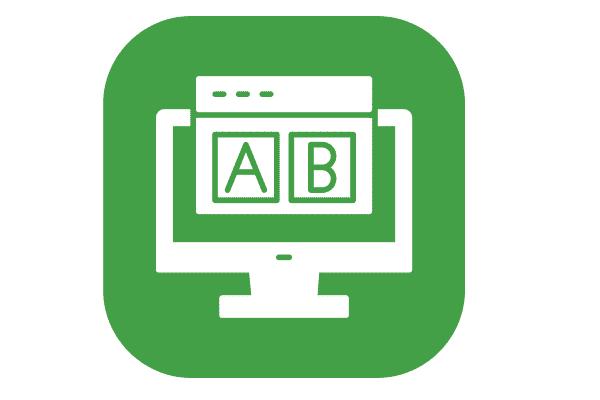

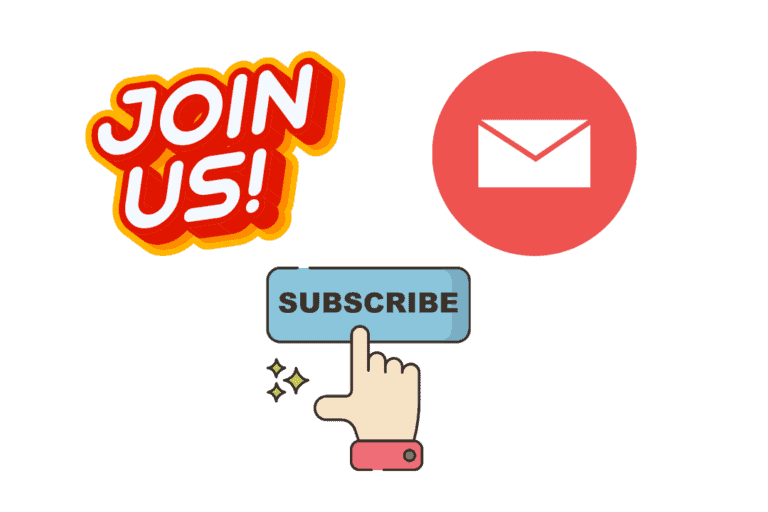
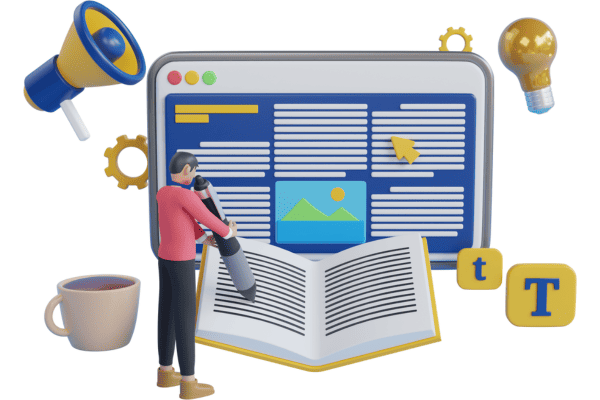

2 Comments
Comments are closed.